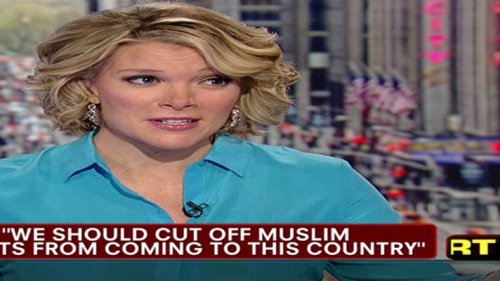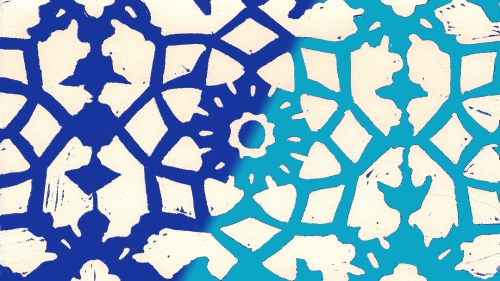Cartoongate Deja vu
 |
Sometime in February 1989, about a dozen or so Muslim community leaders from around the country met in New York City to discuss the controversy caused by Salman Rushdie's postmodern screed called The Satanic Verses. After long discussion, delegates crafted a statement affirming "the freedom of thought and expression guaranteed to all people in this country," yet claiming that "it is highly imprudent and inconsiderate for an individual to completely ignore the religious sensitivities of his fellows in humanity while exercising his freedoms." The statement went on to say that Islam "does not condone violence or the incitement to violence directed against [The Satanic Verses'] author and those associated with its publication." This meeting, I was told, was an idea thought of and largely paid for by a wealthy businessman.
Sometime afterward, a committee was formed to further discuss the essence of the Rushdie controversy. After a couple of weeks of occasional conference calls, the committee concluded that the person and life of Prophet Muhammad was not very well represented in the English language and that the impact The Satanic Verses would potentially have on the public understanding of the Prophet and Islam in general is empowered to a large degree by this dearth of relevant literature. The available body of literature in English on the life the Prophet, besides the incendiary portrayals in many public school history texts, was either of orientalist vintage (mostly academic and crusading in tone) or of Muslim-world vintage (mostly third-world in production, menancingly weak in language and style, and long on sermonizing, short on soul and depth), the notable and peerless exception being Martin Lings' biography of the Prophet, which many committee members never heard of. I was on this committee. And its "findings" were hardly stunning, unaffecting the earth's rotation. But the solution the committee prescribed-to produce authentic source materials about the Prophet Muhammad-unearthed for all to see a more important, if not pathetic, "finding," namely, the existence of an authoritarian notion that a committee can come to a conclusion, push a button, and expect the faithful to run to their word processors and write a book or books-produce literature, in other words.
| Because these Muslims were offended that someone would carelessly associate the Prophet with violence, many Muslims went out and made violence. Now, it could be me, but I find that odd |
While this committee focused on the Prophet, the attitude, as I have seen it throughout my Muslim committee life, pervades deeply through a generation of Muslim institutional leadership that is, thank God, starting to dissipate. Meanwhile, the impact on the literary front is remarkably stunting. I felt then, as I feel now, that my brothers on the committee were living with a contemptible notion of the relationship between religion and culture. Like a snowflake in Hell, the committee evaporated. Nothing was accomplished. The sun rose as expected.
Now cartoonists have had their day. The cartoons are indeed disfigurements of the Noble Prophet. So they offended a lot of Muslims. Because these Muslims were offended that someone would carelessly associate the Prophet with violence, many Muslims went out and made violence. Now, it could be me, but I find that odd.
The overreactions to these cartoons that I have seen show an unsightliness that is antithetical to the personality and message of Prophet Muhammad. But what the intense dudgeon does reveal is a funk uncovered by the cartoons, a funk perhaps associated with a variety of things, like economic and political cul-de-sacs systemic in the Muslim east. The intelligentsia of the Muslim world needs to honestly unpack the meaning of the reactions to these cartoons because clearly something else is afoot.
Nearly every Muslim knows that disparagement of the Prophet of Islam is hardly new. Just as Medieval Europe created fear-fantasies about Jews, "Christ-killers" who apparently ate children, so too did they produce a miasma of animus directed toward the Prophet Muhammad.
Karen Armstrong points out, in her biography of the Prophet, that the energy against the Prophet Muhammad was not so much as a reaction to the marshal and political prowess of the world Islamicate as it was a theological quandary: "How had God allowed this impious faith to prosper? Could it be that he had deserted his own people." An explanation was required as to how this religion could have been so triumphant, producing a civilization of incomparable breadth that was at once prayerful and cosmopolitan.
Eighth century "biographies" of the Prophet Muhammad appeared at the outset of Islam's spread. The polemics kept coming, penned along the way by such venerable names as Dante, Voltaire, and, more recent, translators of the Muslim scripture, such as Rev. Rodwell. If the polemics failed to reach the level of theology, they at the very least have become a cultural meme that has survived to this day. Armstrong says, "In the West we have a long history of hostility towards Islam that seems as entrenched as our anti-Semitism, which in recent years has seen a disturbing revival in Europe. At least, however, many people have developed a healthy fear of this ancient prejudice since the Nazi Holocaust. But the old hatred of Islam continues to flourish on both sides of the Atlantic and people have few scruples about attacking this religion, even if they know little about it."
The Muslim response to the Medieval venom was, in the main, intellectual, secure, and civil -- a reaction that reflects not weakeness but "psychological invincibility" of Muslims of the time, as the late Prof. Fazlur Rahman (University of Chicago) so aptly observed in his book Islam. The violent reactions to these cartoon today reflect, I'm afraid, vincibility.
Now this needs to be explored.
Ibrahim N. Abusharif is the editor-in-chief of the Starlatch Press, a Chicago-based publishing house. You can visit his blog at http://fromclay.blogspot.com
Related Suggestions








